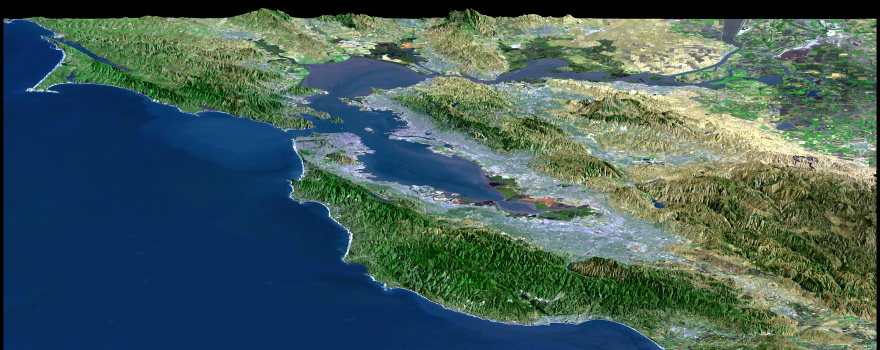Reopening a Northern California creek to threatened steelhead—part 2: using natural sediment to benefit fish
“Most dam removal projects view sediment as a problem. Biologists often worry that releasing the stored sediment will harm fish and wildlife or disperse in unpredictable ways to change the course of streams. Others see releasing stored sediment as a catalyst for flooding. In some cases, though, sediment can be a solution. Biologists working to remove the dam on York Creek knew that sediment spreading naturally through the York Creek and Napa River watersheds could benefit the ecoystem. It could replenish gravel and restore spawning beds, rearing habitat, and resting habitat for steelhead listed under the Endangered Species Act. ... ” Read more from NOAA here: Reopening a Northern California creek to threatened steelhead—part 2: using natural sediment to benefit fish
It’s tern up time in California
“California has once again welcomed tiny and graceful visitors to beaches, estuaries, river mouths and lagoons. The federally endangered California least tern (Sterna antillarum browni), the smallest of the tern species, returns to California — from the bay to the border — each year during the first or second week of April to feast, rest, and nest. Least terns hover over the surf zone or shallow estuarine waters and can be seen plunging into the water from 10–30 feet to capture small, slender-bodied fish like anchovies and topsmelt. They target and capture the fish in the top few feet of the water column. … ” Read more from the US Fish & Wildlife Service here: It’s tern up time in California
Scales of Reference: Hundred-year-old salmon scales are now helping conservation scientists reconstruct and better manage salmon populations
“In late June, 1919, Robert Gibson was feeling optimistic about the salmon. A Scottish veteran of World War I newly arrived in northwest Canada with his wife and infant son, he had recently taken a job as constable and fisheries overseer in the bustling cannery town of Port Essington, on British Columbia’s north coast. Besides the typical tasks of policing, Gibson was also in charge of tracking the numbers of sockeye salmon that returned from the ocean each summer to spawn in various tributaries of the Skeena River. Each day he would examine 50 or more fish, caught by a flotilla of canoes and wooden skiffs waiting with linen nets at the mouth of the river, which ended its long journey to the Pacific just west of Port Essington. In a black notebook, he’d mark the date of capture, length, weight, and sex of each fish. “Sockeye are surprisingly good for beginning of season,” he wrote on June 23. … ” Continue reading at Biographic here: Scales of Reference: Hundred-year-old salmon scales are now helping conservation scientists reconstruct and better manage salmon populations
Survival of the small and shy – angling selects against big, bold fish
“Removing fish from a population through fishing is known to have many impacts, such as selecting for fish that reproduce at younger ages and smaller sizes – now, we can add “timid” to that list. In his seminal 1981 paper, W.E. Ricker described how commercial salmon fisheries have resulted in smaller sizes and earlier maturity for different salmon species, and there are now numerous examples of fish populations that have experienced similar effects due to harvesting. These shifts occur because the longer it takes a fish to reach maturity, the higher its risk of being captured before being able to reproduce, particularly if fishing pressure is high. Therefore, fish that can reproduce at an earlier age are more successful in passing on their genes (which influence reproductive timing), and early maturation and smaller sizes will become more common over time. This phenomenon is of concern for many reasons, including that the surviving, smaller individuals have a reduced reproductive output (because fish body size is highly correlated with the number and quality of eggs a female can produce), which subsequently reduces productivity of the fish stock. ... ” Read more from Fish Bio here: Survival of the small and shy – angling selects against big, bold fish
Jellyfish may benefit from climate change
“During some years in the spring, so many jellyfish wash ashore on the beaches of Washington, Oregon, and California that they carpet the sand in thick, gooey mats. The jellyfish Velella velella can pile so high that taken together, they likely equal six and half blue whales’ worth of stuff. Researchers now want to know where the jellyfish came from and what they could mean for the ecosystem. “The question is, Are all those gazillions of Velella colonies out there eating all the fish eggs?” said Julia Parrish, a marine ecologist at the University of Washington. … ” Read more from EOS here: Jellyfish may benefit from climate change
Droughts longer, rainfall more erratic over the last 50 years in most of Western US
“Dry periods between rainstorms have become longer and annual rainfall has become more erratic across most of the western United States during the past 50 years, according to a new study published by the U.S. Department of Agriculture’s Agricultural Research Service and the University of Arizona. Against the backdrop of steadily warming temperatures and decreasing total yearly rainfall, rain has been falling in fewer and sometimes larger storms, with longer dry intervals between. Total yearly rainfall has decreased by an average of four inches over the last half century, while the longest dry period in each year increased from 20 to 32 days across the West, explained co-senior author Joel Biederman, a research hydrologist with the ARS Southwest Watershed Research Center in Tucson, Arizona. … ” Read more from Science Daily here: Droughts longer, rainfall more erratic over the last 50 years in most of Western US
Microplastics are affecting melt rates of snow and ice
“Microplastics have reached the farthest corners of the Earth, including remote fjords and even the Mariana Trench, one of the deepest parts of the ocean. Recently, yet another distant area of our planet has been found to contain these pollutants: glaciers and ice sheets. An Eos article published in March examines how microplastics create changes in these icy ecosystems, and underscores the importance of properly distinguishing them from another form of pollution in snow, black carbon. ... ” Read more from EOS here: Microplastics are affecting melt rates of snow and ice
Working clean: a guide to curbing the introduction of invasive species
“As outdoor professionals, we have an obligation to minimize the spread of invasive species. When we travel from site to site, sometimes across large areas, we can inadvertently bring invasive species along with us from one site and introduce it to the next. Unfortunately, there isn’t enough attention paid to this topic, but we know that the introduction of alien invasive species into an ecosystem is the second leading cause of species decline (second only to habitat degradation and ahead of pollution, overexploitation, and disease). In other words, introducing an invasive species that was stuck in the grooves of your boot to a new area can be much more destructive than littering. ... ” Read more from ESA here: Working clean: a guide to curbing the introduction of invasive species
Scientists map “pulse” of groundwater flow through California’s Central Valley
“Groundwater is a key resource for water users in California’s Central Valley, a major agricultural hub with an economic output of tens of billions of dollars annually. Surface deformation in the Central Valley has long been linked to changes in groundwater storage, but the timing and movement of water flow beneath the surface has been poorly understood due to a lack of reliable data. Now, for the first time, scientists at the University of California San Diego’s Scripps Institution of Oceanography and School of Global Policy and Strategy, as well as the U.S. Geological Survey are using advanced satellite data to map the “pulse” of groundwater flow through the San Joaquin Valley, the southern portion of the Central Valley. … ” Read more from UC San Diego here: Scientists map “pulse” of groundwater flow through California’s Central Valley
Saving clean drinking water…with math!
“Nearly every resident of California has experienced an earthquake. Even the youngest schoolchildren have the safety procedure drilled into them: duck under a table, hold on, and pray that it’s only a small one. Barring a truly catastrophic quake, the situation usually ends there. You go on with your day as if nothing had happened, the near catastrophe completely forgotten. Most people assume that the danger ends after the last remnants of the tremor share the ground. But there is a much more sinister side effect of earthquakes that affects daily life around California and much of the rest of the world: contaminating the groundwater supply. … ” Read more from USC here: Saving clean drinking water…with math!
About Science News and Reports: This weekly feature, posted every Thursday, is a collection of the latest scientific research and reports with a focus on relevant issues to the Delta and to California water, although other issues such as climate change are sometimes included. Do you have an item to be included here? Submissions of relevant research and other materials is welcome. Email Maven




